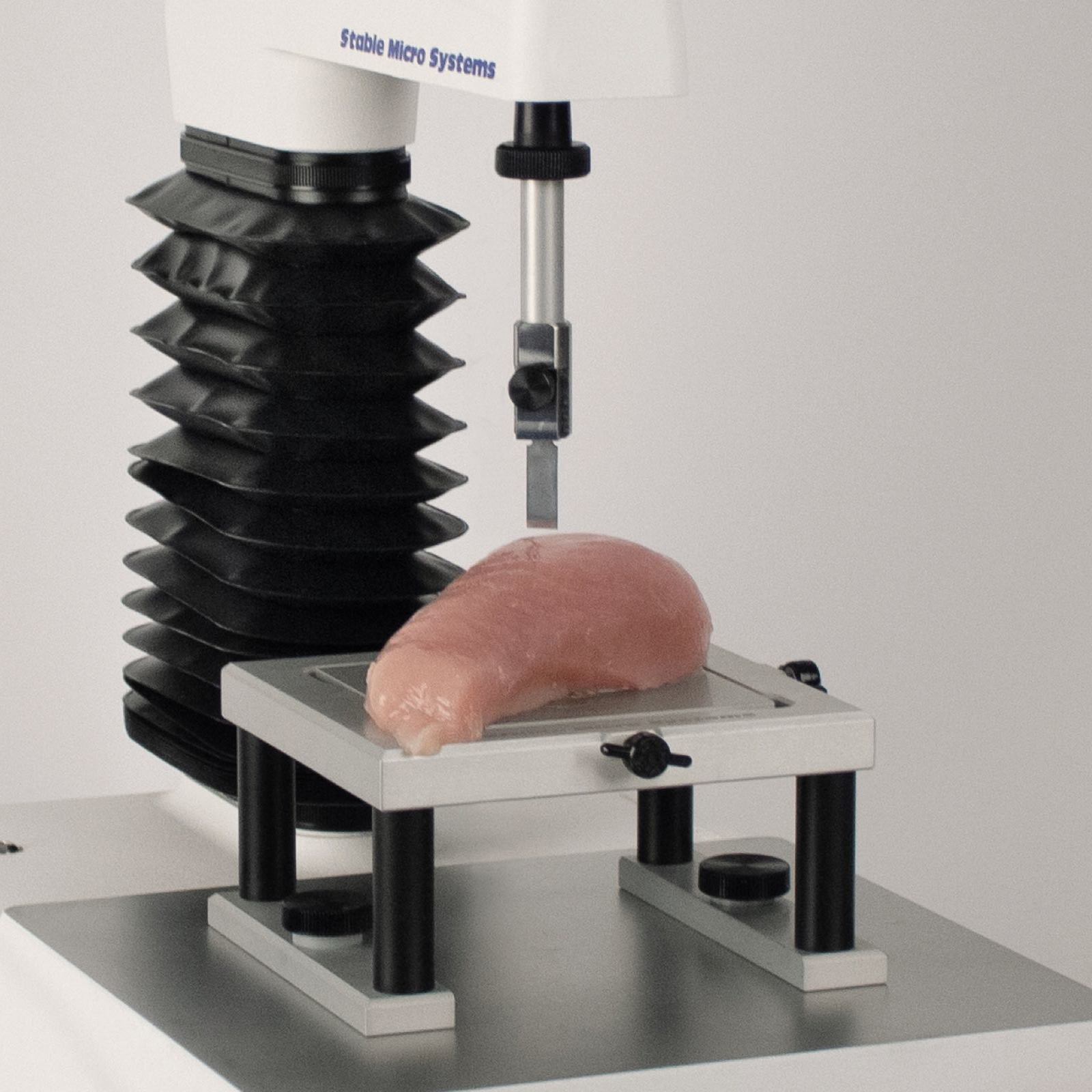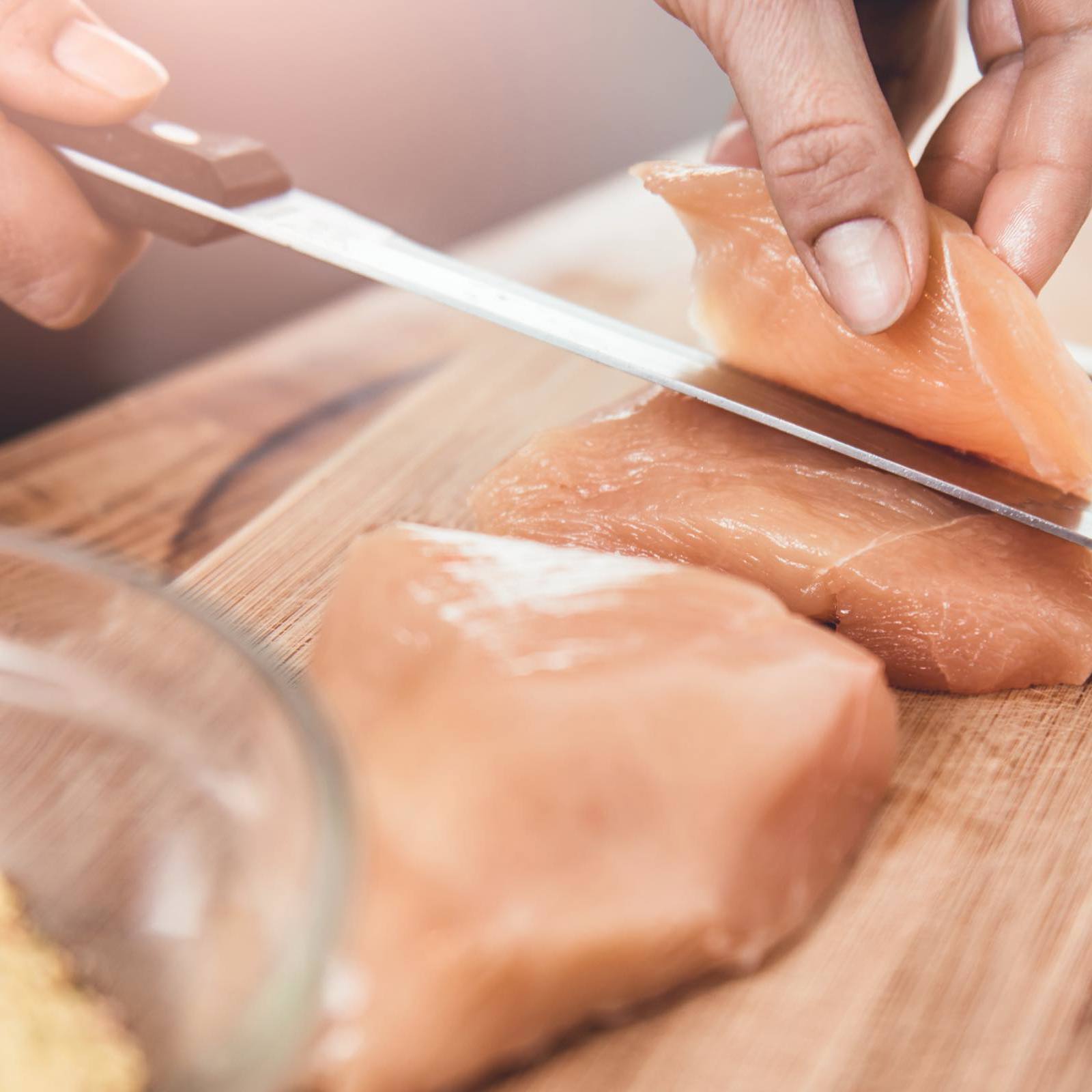
Measuring quality parameters in the poultry and egg industry – Uncooked poultry methods
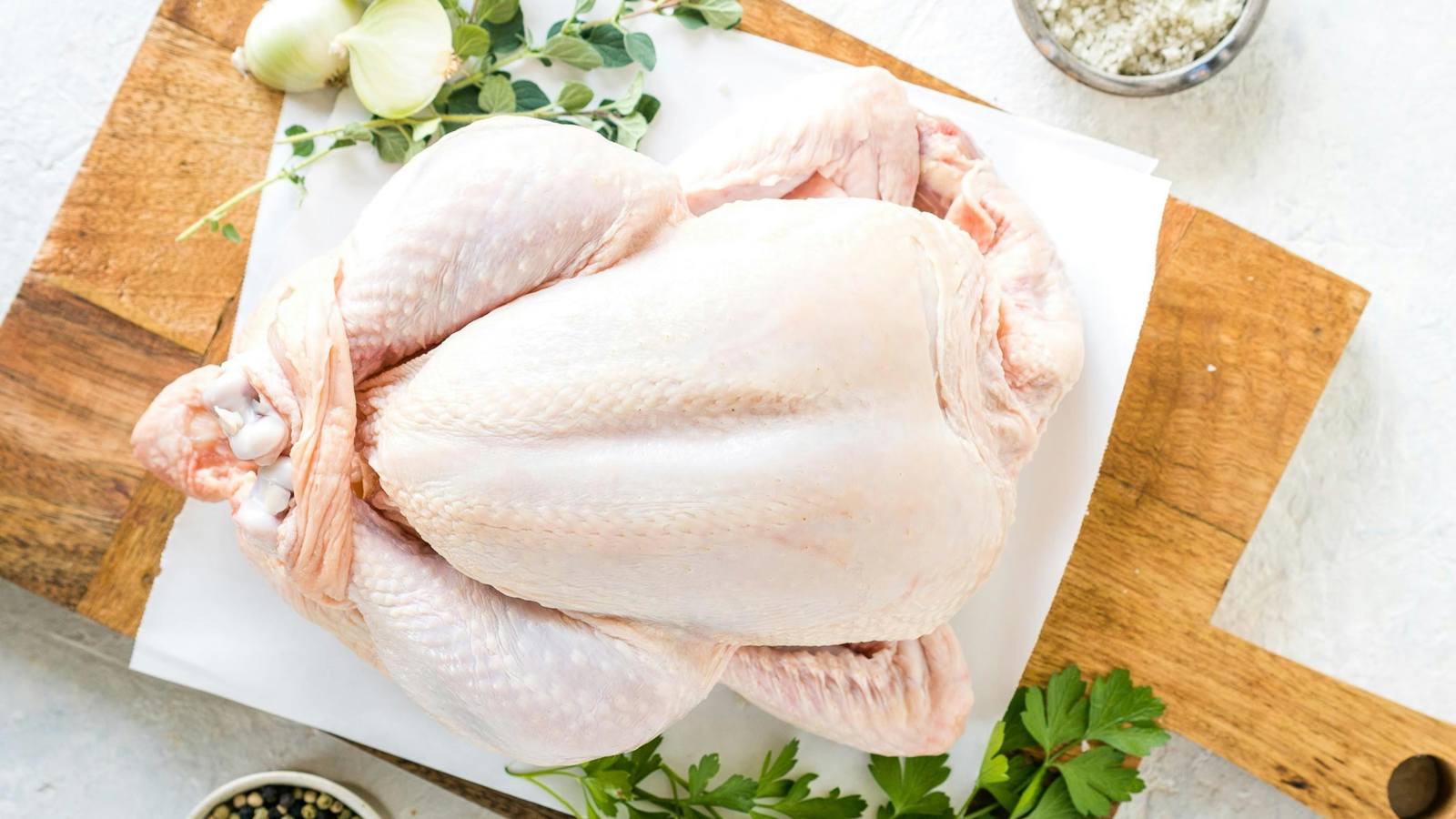
Methods for poultry and egg texture measurement
MORS Knife Blade: Uncooked poultry breast
Woody breast is a challenge currently at the forefront of poultry research. It is a defect in the Pectoralis major muscle in broiler birds, characterised by an abnormal hardness usually detected by palpitation and visual methods. Meat from birds affected by woody breast has lower sensory acceptance scores. As with any defect that negatively impacts sensory evaluation, this causes a large amount of damage to the economy of the poultry industry, which is helping to drive research into this area.
The Meullenet-Owens Razor Shear (MORS) method (resulting from research carried out at the University of Arkansas) uses an extremely sharp craft knife blade of defined dimensions, attached to a TA.XTplusC Texture Analyser, to conduct a cutting/shearing test. Because the blade is narrow and penetrates to only 20mm, the MORS tests makes only a small incision into the sample, causing far less damage to it than traditional instrumental or human cutting tests. Repeatability is also optimised because the blade can be removed and replaced regularly – or even after every test – to ensure edge sharpness. It is recommended that the sharp blade is replaced every 100 measurements for optimum shearing performance and hence result repeatability.
Trials of the blade showed that it can perform 60 measurements per hour – double the number that can be achieved with a Kramer shear test. Both the Kramer Shear Cell and Warner-Bratzler Blade are widely used for evaluating poultry tenderness and have become industry-standard testing methods. However, results are significantly affected by sample dimensions – a concern eliminated by the use of the MORS Blade.
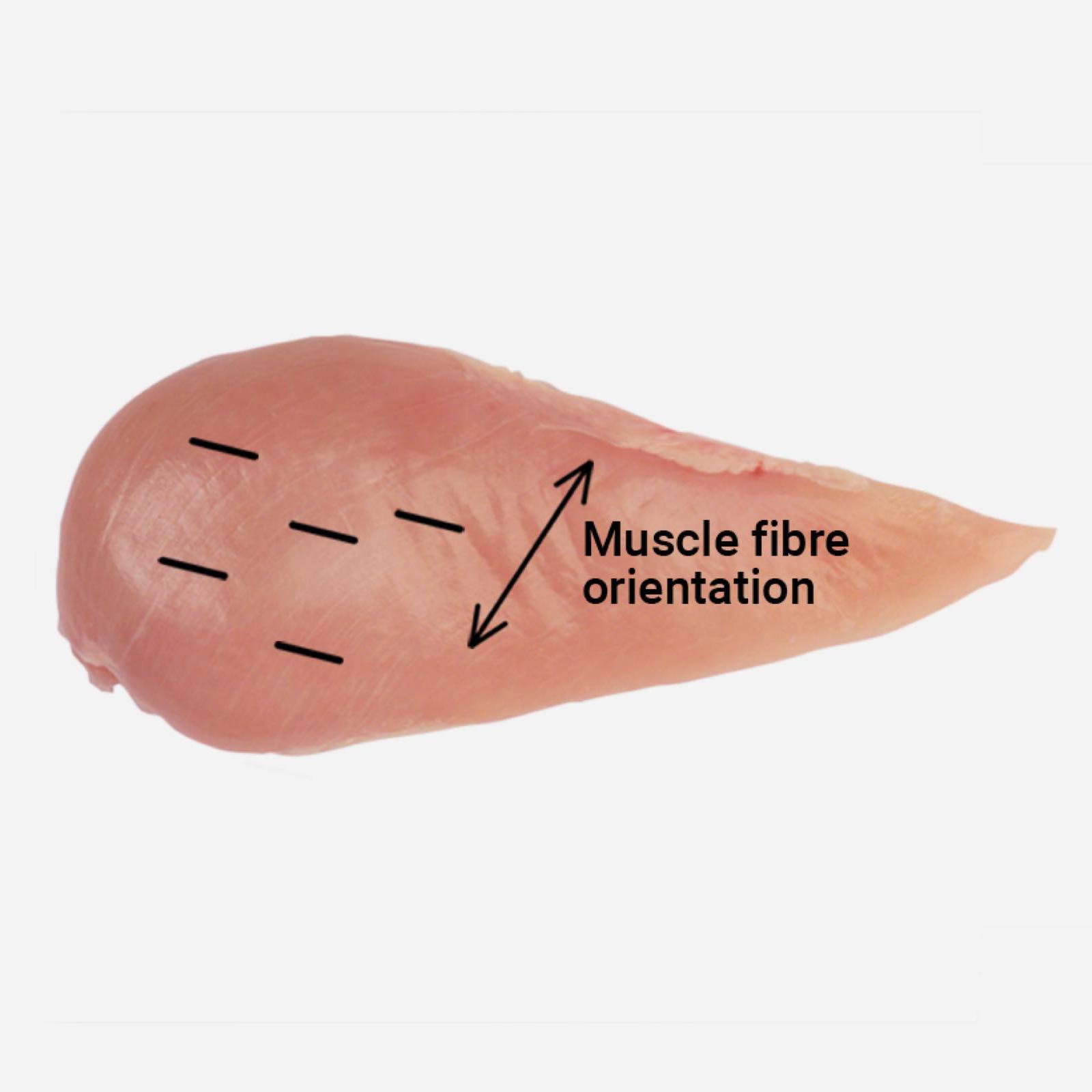
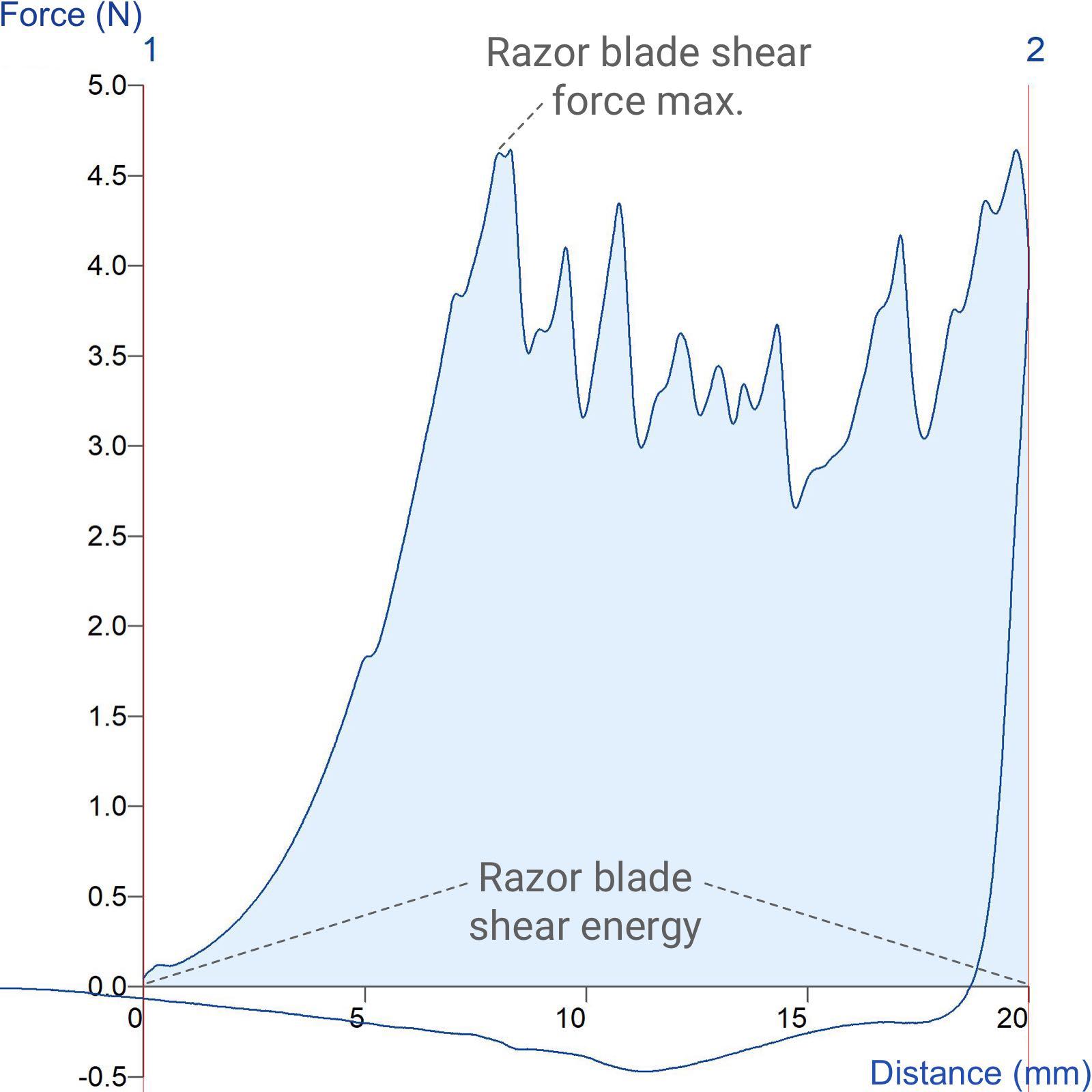
Tests using the MORS Blade are conducted on whole intact fillets, which minimises experimental errors attributable to sample preparation, shortens sample preparation time and leads to a simpler testing solution. This can make significant savings in the labour, time and expertise needed to implement routine quality control in the poultry industry.
In the tests, razor blade shear energy (N/mm) is calculated as the area under the force deformation curve from the beginning to the end of the test. Maximum shear force (N) is also recorded. Both parameters are used as instrumental indicators of meat tenderness. Four or more shears per fillet (in predetermined locations as shown below) will provide a reliable estimate of poultry tenderness.
A number of publications have been found that attempt to deal with the issue of woody breast and its effect on texture. Here are some highlights that measure shear force and shear energy using the MORS Blade:
- Research Note: Effects of supplementing cranberry and blueberry pomaces on meat quality and antioxidative capacity in broilers – McGill University and Yangzhou University.
- Meat quality traits and Blunt Meullenet- Owens Razor Shear characteristics of broiler breast fillets affected by woody breast condition and post-cooking meat temperature – Researchers at Chuzhou University, University of São Paulo and University of Arkansas tried out a blunt version of the MORS Blade on their TA.XTplus Texture Analyser.
- Fillet Dimensions and Meat Quality Attributes Associated With Woody Breast in Broilers – University of Arkansas used MORS Blade and blunt MORS Blade on their TA.XTplus Texture Analyser.
- Nutritional Properties and Oxidative Indices of Broiler Breast Meat Affected by Wooden Breast Abnormality – National Center for Genetic Engineering and Biotechnology in Thailand
- Comparing three textural measurements of chicken breast fillets affected by severe wooden breast and spaghetti meat – At University of Padova this study compared three popular textural tests using their TA.XTplusC Texture Analyser: the compression, MORS Blade, and Allo– Kramer tests, which are used to detect the wooden breast and spaghetti meat myopathies.
Alternative Texture Analysis techniques to the MORS Blade, such as compression or penetration, may be useful during the course of an investigation into woody breast.
- Quality and stability of cooked sausages made from turkey meat affected by the white striping myopathy – At Universidad de Vigo researchers used their TA.XT2i Texture Analyser equipped with a 35mm cylinder probe to perform Texture Profile Analysis (TPA).
- Effect of wooden breast myopathy on texture and acceptability of emulsified chicken patties – At Federal University of Paraiba researchers also used their TA.XT2i Texture Analyser equipped with a 35mm cylinder probe to perform Texture Profile Analysis (TPA).
- Quality of breast meat from broiler chickens raised in Brazil affected by white striping myopathy – At Universidade Estadual de São Paulo they used TA-XT2i texture analyser equipped with a Warner-Bratzler Blade to measure shear force to evaluate tenderness.
- Using air deformation of raw fillet surfaces to identify severity of woody breast myopathy in broiler fillets – At Chuzhou University and University of Arkansas Department of Poultry Science they used a 6mm cylinder probe on their TA-XTplus Texture Analyser to assess peak counts of shear curves to describe meat texture.
Part 2 in a 6 part series on measuring quality parameters in the poultry and egg industry. Read Part 1 – Introduction, Part 3 – Cooked chicken methods, Part 4 – Bones and intestines and Part 5 – Processed chicken products and Part 6 – Egg properties.

